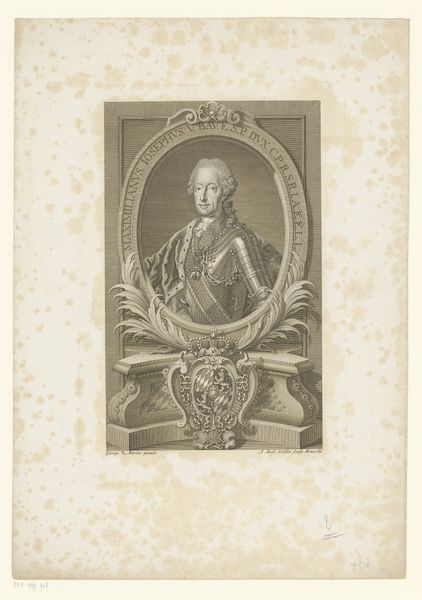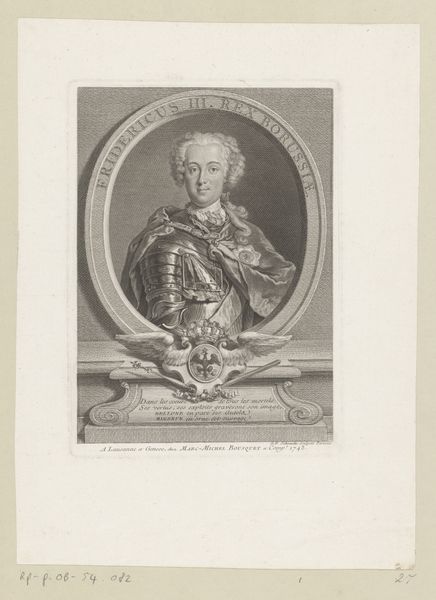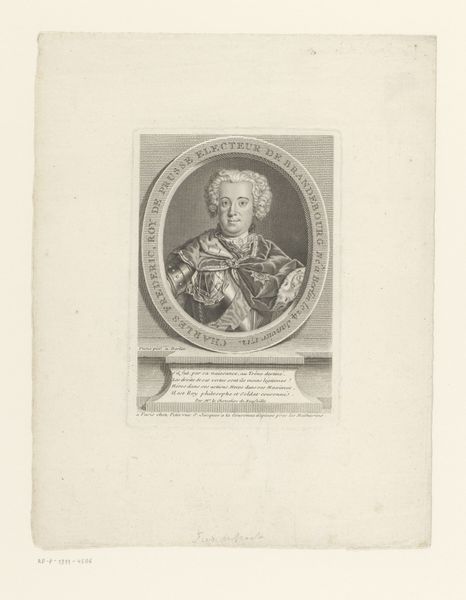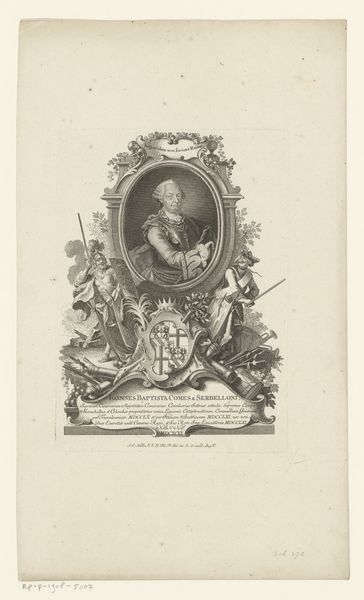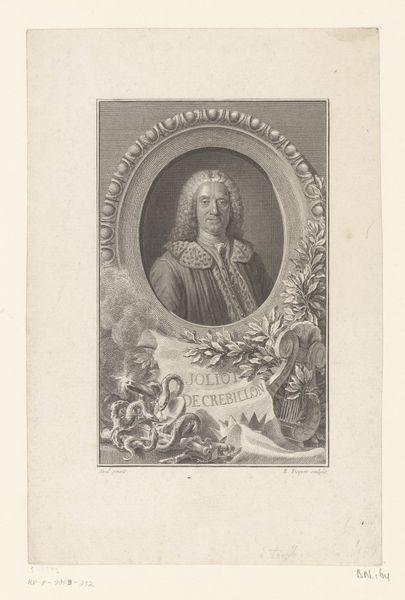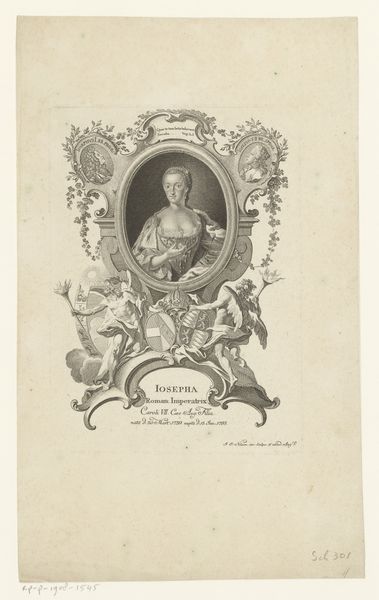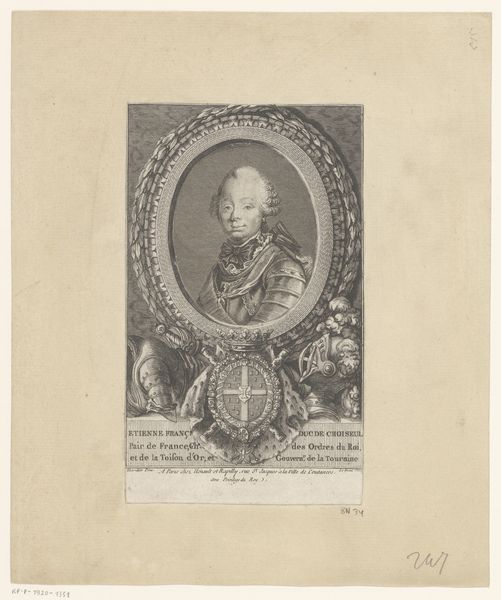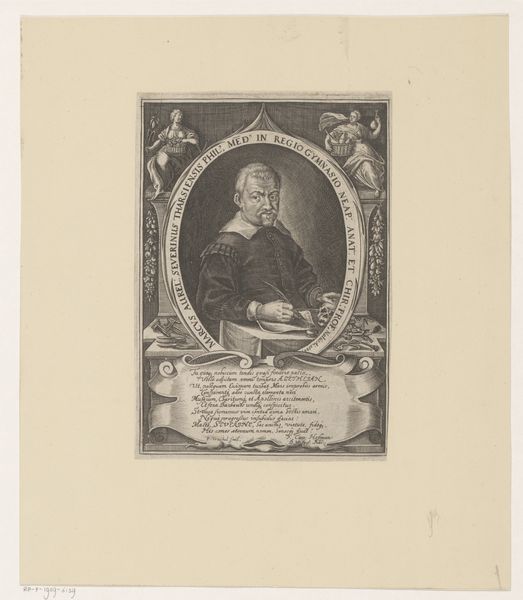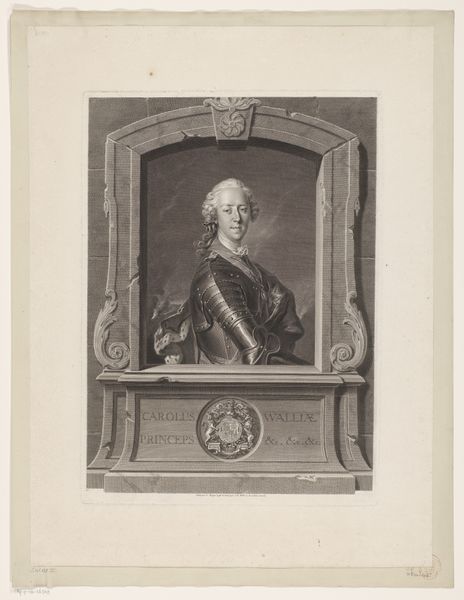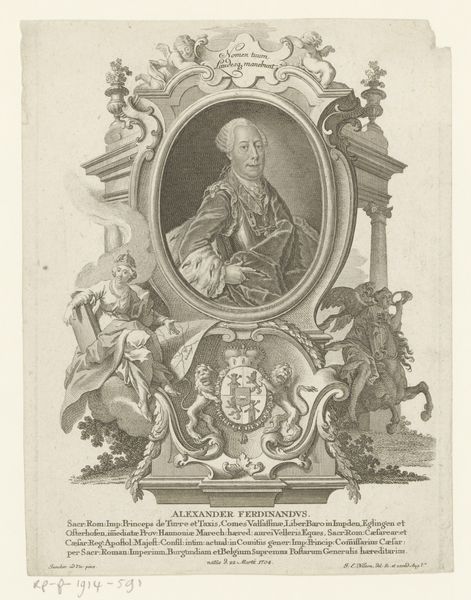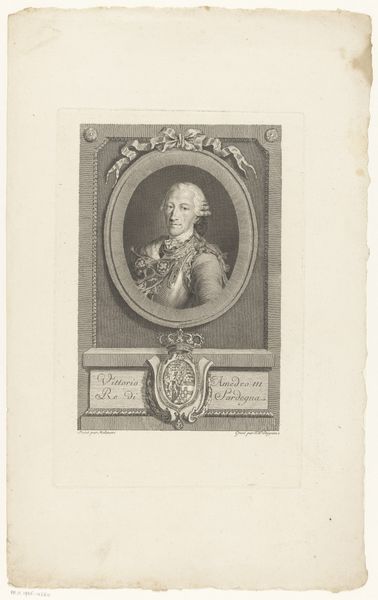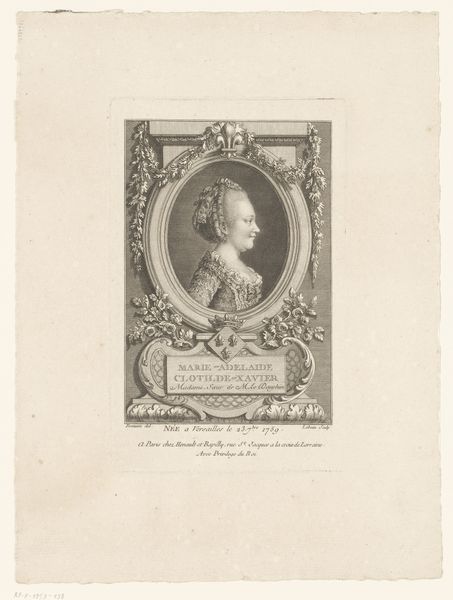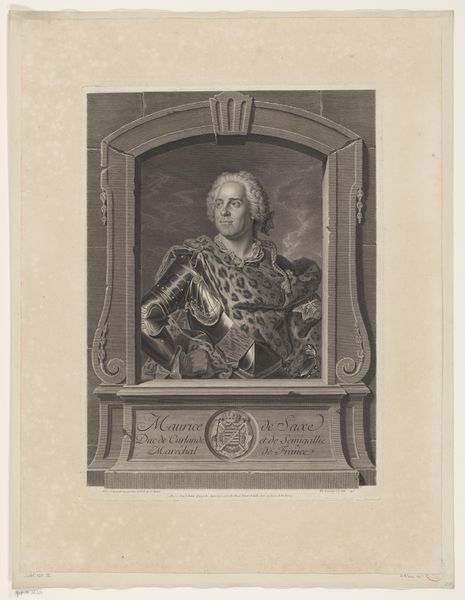
print, paper, engraving
portrait
baroque
ink paper printed
old engraving style
paper
history-painting
engraving
Dimensions: height 140 mm, width 89 mm
Copyright: Rijks Museum: Open Domain
Editor: Here we have Martin Bernigeroth's "Portret van Karl Alexander van Lotharingen," dating from 1729 to 1767. It's an engraving on paper, and I'm immediately struck by the formality of the pose and the intricate detailing achieved with the engraving technique. What compositional elements stand out to you in this print? Curator: Observe the oval frame. It isolates the subject. This isolation, combined with the crisp lines of the engraving, brings a certain sharpness to the composition. The textures are critical too, the contrast between the smooth skin, the metallic armour, and the draped cloth suggests Bernigeroth's careful and highly accomplished manipulation of the engraving tool. Do you notice any areas where the lines create a palpable sense of depth? Editor: Yes, I see what you mean about depth in the armour, and around the face – through the strategic use of hatching and cross-hatching. The play of light and shadow seems deliberately structured. Does this suggest anything about the meaning of the piece? Curator: I believe so, and to a Formalist, the content is revealed in those arrangements. The sitter is presented through contrasts and precise order. Meaning is secondary to presentation. I consider how Bernigeroth arranged light and surface to represent power, or nobility; the portrait shows his manipulation of form above everything else. Editor: That’s fascinating. I was so focused on the historical aspect, but I see how analyzing the lines and textures unlocks a whole different layer of understanding. Curator: Precisely. Focus on the elements, and they will communicate everything that you need to know. Editor: I appreciate this insight, thank you. It has shifted my focus on the artist’s treatment of lines as expressive tool rather than merely representational.
Comments
No comments
Be the first to comment and join the conversation on the ultimate creative platform.
